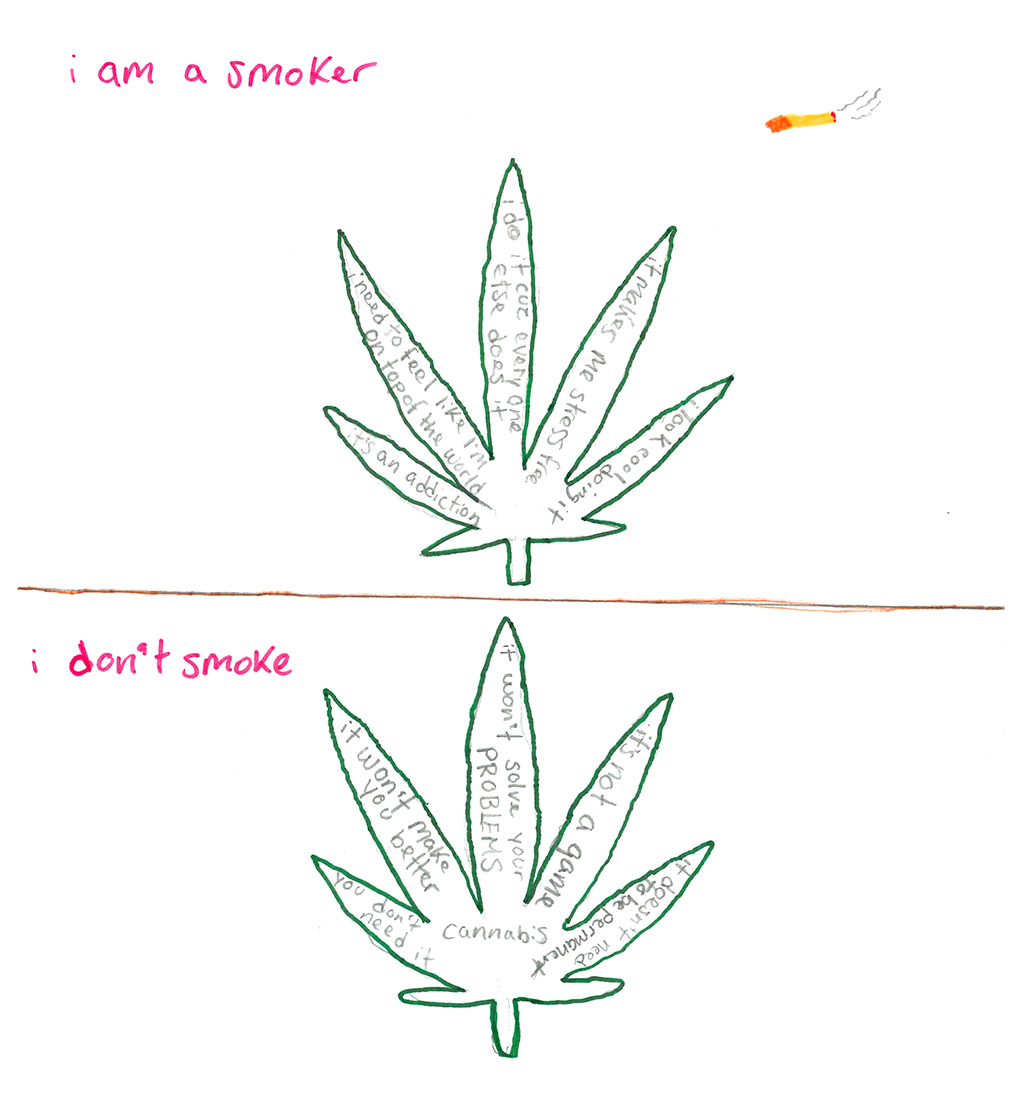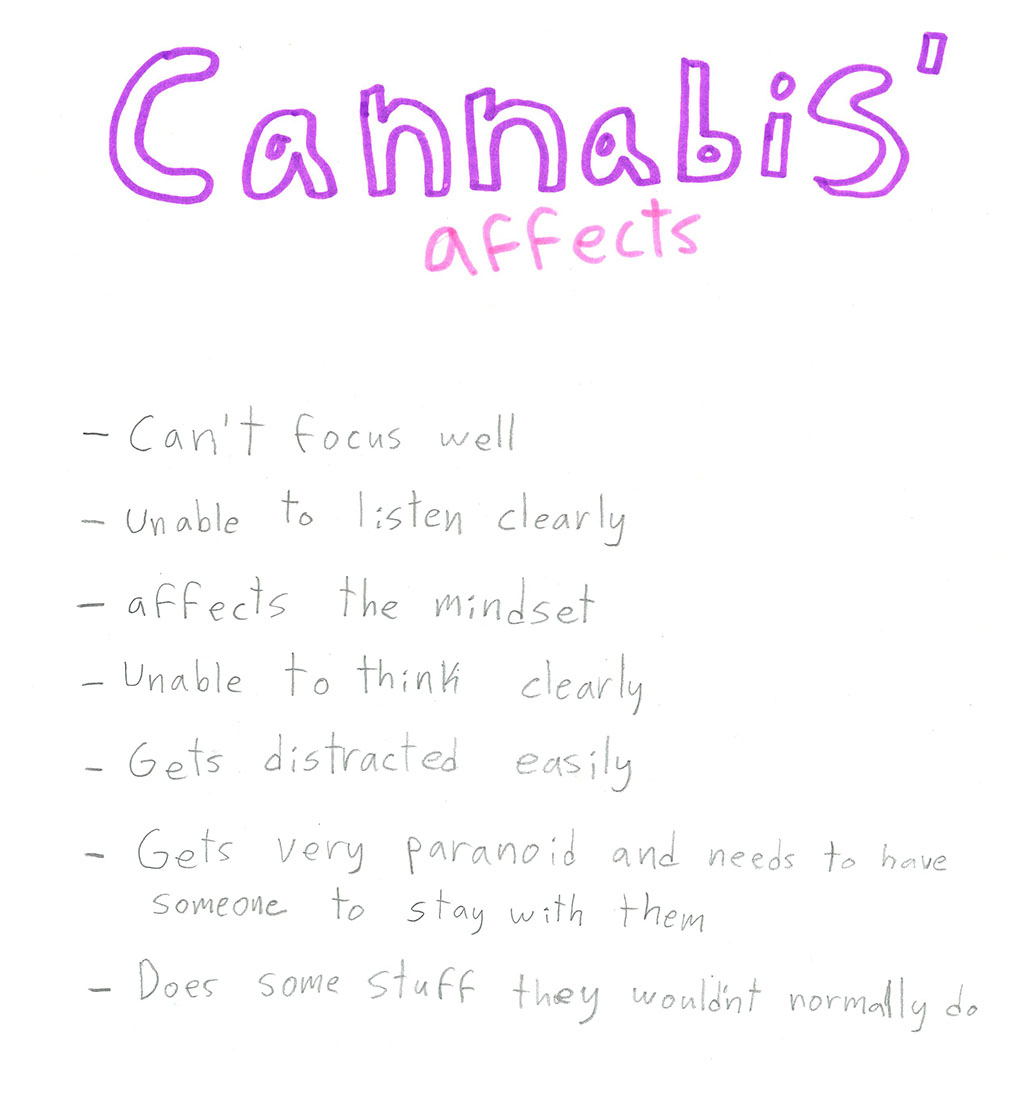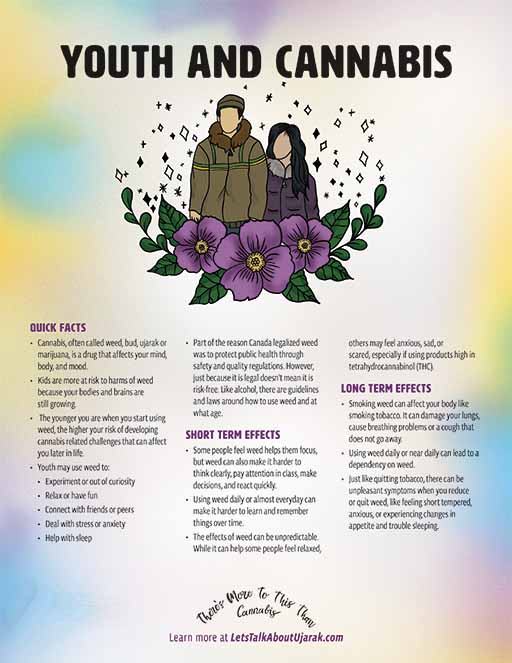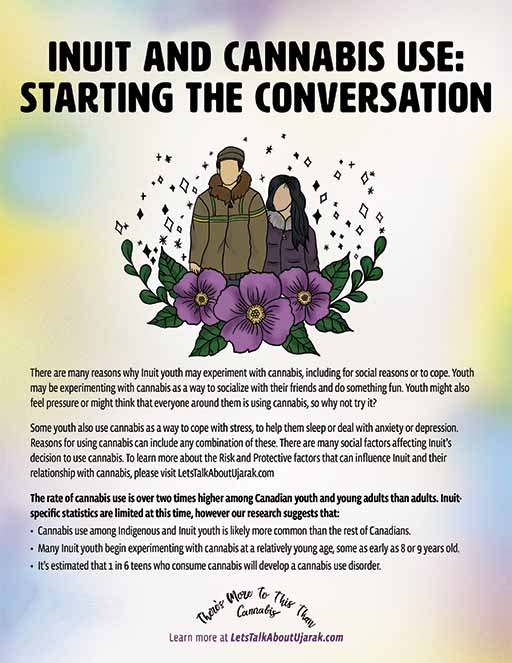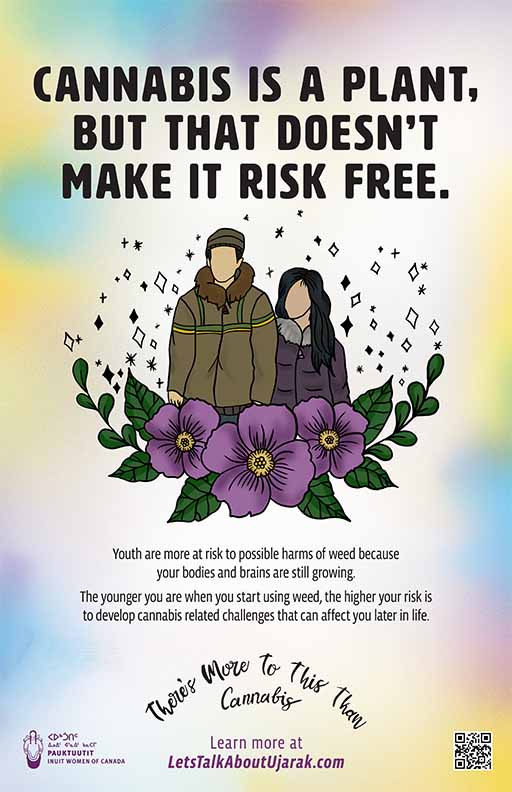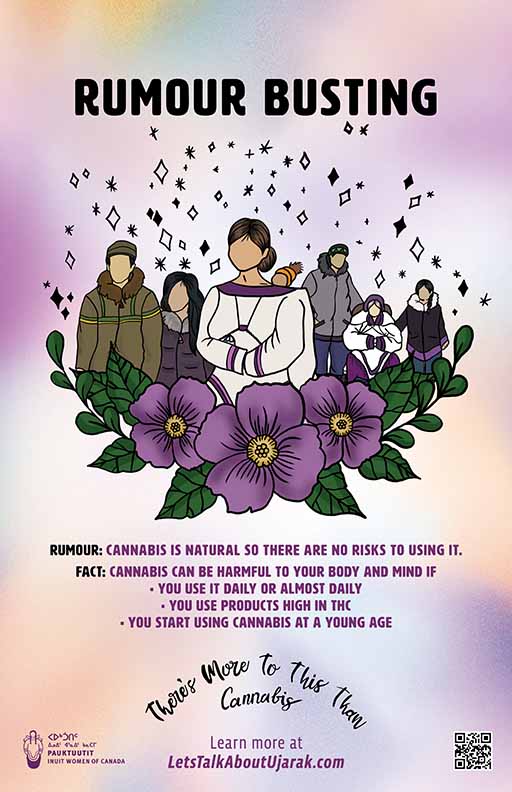Because the bodies and brains of youth are still growing, youth are more at risk to the potential harms of cannabis. Learn more about how cannabis can affect youth as well as tips to reduce the risks of cannabis use in the resources below.
Short Term Effects
- Some people feel weed helps them focus, but weed can also make it harder to think clearly, pay attention in class, make decisions, and react quickly.
- Using weed daily or almost everyday can make it harder to learn and remember things over time.
- The effects of weed can be unpredictable. While it can help some people feel relaxed, others may feel anxious, sad, or scared, especially if using products high in tetrahydrocannabinol (THC).
Long Term Effects
- Smoking weed can affect your body like smoking tobacco. It can damage your lungs, cause breathing problems or a cough that does not go away.
- Using weed daily or near daily can lead to a dependency on weed.
- Just like quitting tobacco, there can be unpleasant symptoms when you reduce or quit weed, like feeling short tempered, anxious, or experiencing changes in appetite and trouble sleeping.
Other Impacts of Cannabis Use
-
Weed can affect your physical health including your endurance for hockey, soccer, and other sports.
-
Ujarak is expensive! Think of all of the other things you could buy with that money.
-
Buying from unlicensed sellers comes with the risk of getting weed that is poor quality or contains mould, chemical pesticides, or other dangerous drugs.
-
Heavy use of weed may cause you to lose interest in hobbies and relationships, which can cause problems with family and friends.
-
Similar to alcohol, workplaces do not allow working while high and you could face punishment, lose your job, or be involved in an accident.
Mental Health
While some people may use weed to relax or relieve pain, frequent use ofweed at an early age carries some risks to mental health. Heavy cannabis use can increase the risk of developing mental health challenges like schizophrenia. The risk is greatest among individuals with:
- a family history of mental illness
- those who frequently use products containing high amounts of THC
- those who begin use early in life (before the age of 16)
- those with past traumatic experiences
- Problematic cannabis use and cannabis use disorder are more common among individuals with mood and anxiety disorders.
Driving While High
- Weed can cause you to be clumsy and react slowly. This makes it dangerous for you to drive a vehicle, quad, skidoo, boat, or truck while high.
- It is best to wait a minimum of 4-6 hours before driving after inhaling weed, but it’s important to remember that the way weed is taken, the amount used, and even the differences from person to person can all extend this time. If you don’t feel right, don’t drive.
- Driving while high makes you 2 times more likely to get into an accident, which can cause serious injury or death.
- It is illegal to drive high in Canada. If you are caught driving while impaired, you may get a penalty like:
-
- Having to pay a fine
- Having your drivers licence taken away
-
Reducing the Risk – Harm Reduction tips
- It is best to try to wait to use weed until you are about 25 years old because your brain is still developing until then.
- Space out the time of the week when you use weed so you are not using daily or near-daily. Try to use it once a week or less.
- Limiting your use of weed to non-school days can help with focusing in school.
- Try to choose products that have lower amounts of THC like 15% or lower. High THC concentrated products such as some forms of shatter, dabs, or wax, have more risks for your physical and mental health.
- Smoking is the least healthy way of using cannabis. Consider edibles as a less harmful choice, however remember that some edibles can be very potent and have longer lasting effects than smoking.
- Try to avoid using cannabis with other drugs. Mixing cannabis with other drugs can lead to unexpected and dangerous effects:
-
- Using cannabis with alcohol can heighten the effects of both drugs and increase the risk for over-intoxication.
- Using weed with tobacco increases your risk of dependency and exposes you to more harmful chemicals, compared to using either on its own.
- Using weed with other drugs can have unpredictable effects or lead to potential overdose situations.
-
- Plan a safe way home or stay at a friend’s house if you are going to a party with cannabis. Getting into a vehicle with a high driver risks everybody’s safety.
- Do you feel safe where you are choosing to use cannabis and the people you are with? Choose to use with people you trust and places that are safe.
- Avoid sharing bongs or joints to reduce the risk of spreading germs or tuberculosis.
- Make sure to safely store any cannabis products. Keep weed out of reach from young kids and pets.
Let’s Talk About Ujarak Youth Poster Contest
Inuit youth can be exposed to cannabis use at ages as young as 9 years old, so it is important to start conversations about cannabis early! Pauktuutit is visiting schools across Inuit Nunangat to deliver workshops about cannabis use, its effects, and how to reduce harms.
Following the workshop in Nunavik, youth had an opportunity to participate in a contest to create posters for other Inuit youth, to share information about risks of cannabis use and ways to reduce harms.
Factsheets and Posters
Fact Sheet available in:
English
Inuktitut
Inuinnaqtun
Inuttitut
Inuvialuktun
Nunavik
Discussion Guide available in:
English
Inuktitut
Inuinnaqtun
Inuttitut
Inuvialuktun
Nunavik
Poster available in:
English
Inuktitut
Inuinnaqtun
Inuttitut
Inuvialuktun
Nunavik
Rumour Busting Poster
available in:
English
Inuktitut
Inuinnaqtun
Inuttitut
Inuvialuktun
Nunavik
Production of these resources has been made possible through a financial contribution from Health Canada. The views expressed herein do not necessarily represent the views of Health Canada.
Le présent ressources a été produit grâce à la contribution financière de Santé Canada. Les opinions exprimées ne représentent pas nécessairement celles de Santé Canada.

